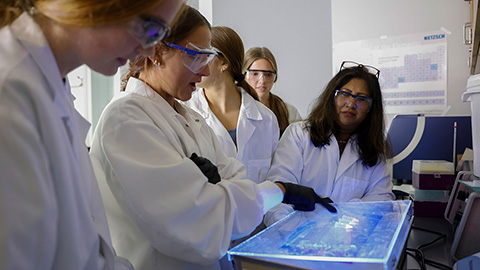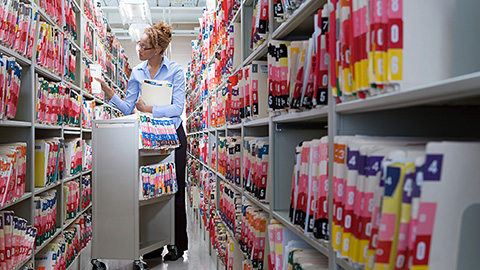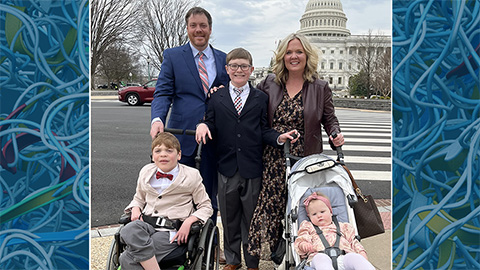A journey with scientists
We often remember how important journeys in our lives begin. I began my journey with the American Society for Biochemistry and Molecular Biology as a graduate student at Washington University in 1976 while in the biochemistry department (now the department of biochemistry and molecular biophysics).
This department had an atmosphere of excitement and discovery among the faculty, students and postdoctoral fellows. The departmental culture encouraged the free exchange of results and ideas, and we were all excited when we had the opportunity to extend these discussions to others in our own and related fields. We had two major avenues for these exchanges: publishing our results in good journals and going to national and international meetings. The two premier platforms for such exchanges were the Journal of Biological Chemistry and the ASBMB annual meeting.
This did not change for me as a postdoctoral fellow and continued when I joined the faculty at Johns Hopkins University in 1986. The high esteem for JBC and the ASBMB annual meeting was palpable among the biochemists and molecular biologists at Hopkins. Dan Lane, director of the biological chemistry department, was elected president of the ASBMB in 1990 and championed the benefits of becoming an ASBMB member. He wasn’t wrong. As I started my career, my first-choice journal was JBC, and my go-to meeting was the ASBMB annual meeting, where I met colleagues and made friends that remain in my life to this day.
In 2010, I organized a lipid-themed session for the ASBMB meeting, and I then served as a co-chair for the 2011 meeting. It was exciting for me to learn more about how the ASBMB functions and makes decisions; I was gratified to learn that the underlying motivation was to serve scientists. This applied beyond the principal mission to help scientists disseminate and discuss their results with leaders in a variety of fields and foster new interdisciplinary collaborators. The society also has a well-oiled structure to stay abreast of important trends that affect both established investigators and trainees. These include issues such as funding, job placement and career development, minority affairs, and education.
As my career developed and my associations with the ASBMB grew, I had the opportunity to become the chair of the Meetings Committee. Not surprisingly, I saw firsthand how dedicated ASBMB members can work together to organize a great annual meeting. We had the freedom to explore new ideas and structures for the meeting, adjusting to those that worked well and jettisoning those that were less successful. While committee members held differing views on various topics, it was clear that the meeting’s success was of paramount importance. It was refreshing and reaffirming to see how folks from different areas of biochemistry and molecular biology could work synergistically to put together an exciting meeting.
In addition to my work on annual meetings, I helped establish the ASBMB Lipid Research Division with Binks Wattenberg, a professor at Virginia Commonwealth University. This division, now under the direction of George Carman and Rob Stahelin, exemplifies how the ASBMB can help foster and support a field of biochemistry occupied by many society members. Its impetus came from lipid scientists who felt this diverse field lacked a platform where investigators and trainees in its subfields could form a more cohesive community and foster collaborations. The ASBMB — in particular, Barbara Gordon, then the executive director — went above and beyond any job description to help establish this division and foster a now healthy and growing community that addresses community-specific issues.
For example, many lipid investigators felt their National Institutes of Health grant proposals were placed in study sections that lacked reviewers with the lipid expertise necessary for an adequate review. This wasn’t surprising, given the interdisciplinary nature of lipid research and its impact on a variety of fields. Consequently, lipid-related proposals often were assigned to study sections that were unfamiliar with the field. To address this, the ASBMB LRD collaborated with the NIH Center for Scientific Review and provided a list of qualified lipid scientists within the ASBMB, along with their specific expertise, who were willing and able to serve on study sections. This list was shared with the scientific review officers to help them find the necessary expertise. Given the LRD’s success, more divisions are likely to develop in the future to serve other disciplines within the ASBMB community.
The ASBMB not only has been influential in my development as a scientist but also has been instrumental in fostering a vibrant scientific community. From what I can tell, there’s a lot more excitement to come.
Enjoy reading ASBMB Today?
Become a member to receive the print edition four times a year and the digital edition monthly.
Learn moreGet the latest from ASBMB Today
Enter your email address, and we’ll send you a weekly email with recent articles, interviews and more.
Latest in Opinions
Opinions highlights or most popular articles

Debugging my code and teaching with ChatGPT
AI tools like ChatGPT have changed the way an assistant professor teaches and does research. But, he asserts that real growth still comes from struggle, and educators must help students use AI wisely — as scaffolds, not shortcuts.

AI in the lab: The power of smarter questions
An assistant professor discusses AI's evolution from a buzzword to a trusted research partner. It helps streamline reviews, troubleshoot code, save time and spark ideas, but its success relies on combining AI with expertise and critical thinking.

How AlphaFold transformed my classroom into a research lab
A high school science teacher reflects on how AI-integrated technologies help her students ponder realistic research questions with hands-on learning.

Writing with AI turns chaos into clarity
Associate professor shares how generative AI, used as a creative whiteboard, helps scientists refine ideas, structure complexity and sharpen clarity — transforming the messy process of discovery into compelling science writing.

Teaching AI to listen
A computational medicine graduate student reflects on building natural language processing tools that extract meaning from messy clinical notes — transforming how we identify genetic risk while redefining what it means to listen in science.

What’s in a diagnosis?
When Jessica Foglio’s son Ben was first diagnosed with cerebral palsy, the label didn’t feel right. Whole exome sequencing revealed a rare disorder called Salla disease. Now Jessica is building community and driving research for answers.

